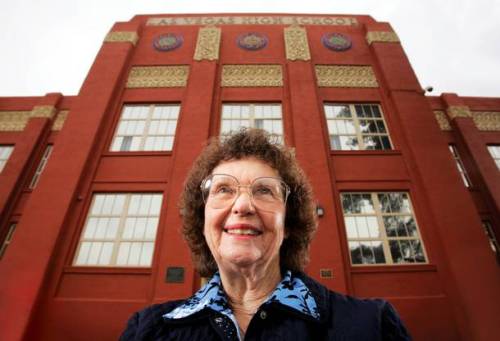Sixty Years Ago


On January 27th,1951 the first above-ground atomic bomb was tested on American soil at the Nevada Proving Ground (aka the Nevada Test Site). Prior to that, atomic testing had been at the Bikini Atoll out in the south Pacific. But for a variety of reasons, the Atomic Energy Commission decided to bring the testing closer to home and Frenchman's Flat in southern Nevada, was chosen for the site.
The atomic age brought an influx of scientists and workers into Las Vegas. They became members of the community and raised their families here. However, unlike others, they could not talk about their jobs.
As part of the Classic Las Vegas history project, we did video histories with a wide swath of long-time and native born residents who had lived in Las Vegas for more than thirty years. We included Al O'Donnell, who came to Las Vegas as an atomic scientist in 1950, Marie McMillan who worked for EG&G at the Test Site, Don English who photographed the bomb blasts throughout the 1950s for the Las Vegas News Bureau and numerous residents who, as children, had been wakened by their parents in the wee hours of the morning to watch the blasts.
Sen. Richard Bryan, who was a teen at Las Vegas High School remembered the school's yearbook had a bomb blast on its cover (and that can be seen in his class' Senior Square at the front of the old high school). John Ullom remembered being on Fremont Street and feeling the bomb blast and just thinking "oh, must be another test." Carey Burke remembered one bomb blast where the shockwave broke the plate glass windows of downtown department store. Emmett Sullivan remembered being invited out to the Test Site to see a bomb blast and recalled "it was all the colors of the rainbow."

Don English, above, remembered how difficult it was to photograph the blasts while wearing the googles that protected his eyes from the searing white light. One morning he overslept and did not have time to get to News Nob. He hurried downtown as he figured he could get the shot from atop one of the buildings.

The photo he took that morning made the cover of Life Magazine.
If you are, like me, of a certain age, atomic testing (both above-ground and below-ground testing) was part of growing up in Las Vegas. My elementary school, Rose Warren in Charleston Heights, had an air-raid signal on the roof. It was tested every Saturday morning at noon. If it went off at any other time, we were taught to duck and cover.
I remember one blast (below ground) that was so strong that it broke the display window at Woolco on West Charleston (where Walmart is today).
What memories do you have of the Test Site and atomic testing?
FYI, want to learn more atomic testing and Las Vegas? Many of those we interviewed are featured in our DVD "The Story of Classic Las Vegas" talking about that era.
Home Means Las Vegas
April Corbin at the Las Vegas Weekly has a wonderful article this week about the multi-generations of people who have called Las Vegas home for the last 75 years. One of those in the spotlight is Gretchen Payne, wife of former Las Vegas News Bureau Manager Don Payne. But Gretchen's roots in the community go back to her childhood. She was born in a small house on Fremont Street back in 1935 and has called Las Vegas home ever since.

Her father taught science at Las Vegas High School and she is a wealth of information not only on the history of the high school but also all the changes she has witnessed as Las Vegas grew from a dusty railroad town to the entertainment capital of the world to the metropolis of the 21st Century.
Ms. Corbin also spotlights a number of natives who are all glad to call Las Vegas home.
Check it out: Las Vegas Weekly
St. Thomas to be closed weekdays for a month

St. Thomas, the little farming community that was swallowed up when the water behind the dam began filling up Lake Mead in the mid-1930s and then came back into view seventy years later due to the drought crippling the Southwest and bringing Lake Mead to historic low water levels, is going to be closed during the week for the next month.
The National Park Service needs to remove tamarisk whose roots are endangering the fragile foundations of various buildings around the town site. Tamarisk is not native to the region and is also known as salt cedar.
An archaeologist will oversee the project.
The town site and access road will be open on weekends.
Happy Trails!
Historic Preservation Office wants to hear from you!





